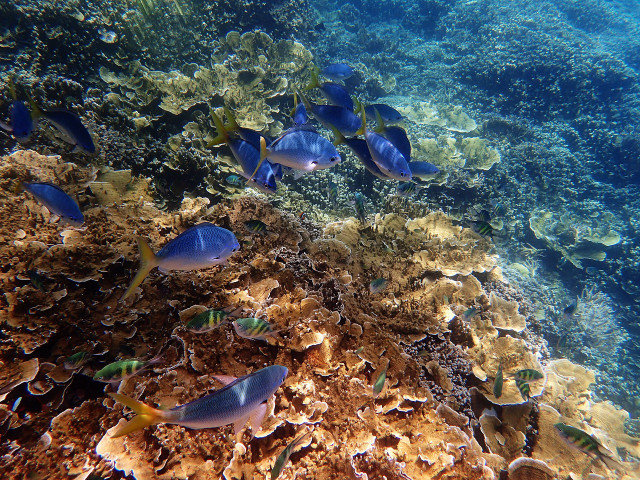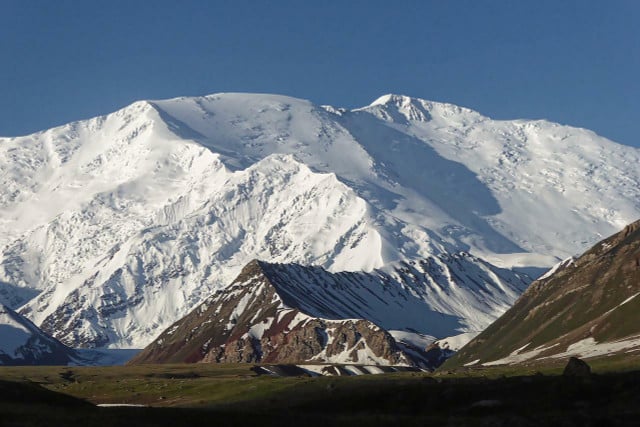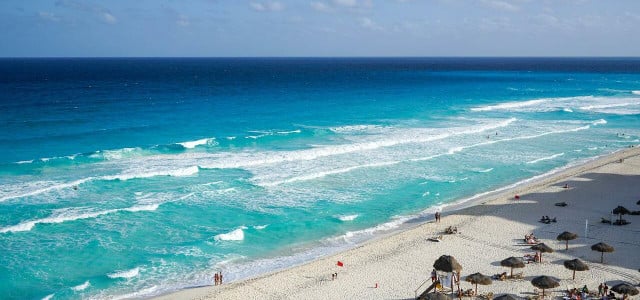Last-chance tourism parallels the climate crisis and will likely become increasingly common over the next years. Make sure to be a sustainable and ethical tourist with these tips.
Last-chance tourism is a phenomenon directly related to the climate crisis. As locations such as the Great Barrier Reef, Everglades, Maldives, Galapagos Islands and polar ice caps become increasingly threatened by climate change, more and more tourists flock to these places to see them before they no longer can.
The fear of missing out on one of the wonders of the world influences people to prioritize locations which may soon be underwater, eroded, melted, or otherwise ruined or destroyed. Not all of these locations will necessarily be completely gone within our lifetimes. Some will simply be banned as tourist destinations due to the negative impacts visitors have. Others lose their magnificence, charm and color as climate change wears away at the site.
Still, many are projected to be entirely wiped away within a few decades. Experts predict the Great Barrier Reef could disappear by 2050, for example. These concerns have been discussed for several years already, and they’re galvanizing many tourists. In 2016, almost 70 percent of visitors at the reef reported they were there in large part to see it before it’s gone.
It’s not just natural wonders which are in danger. Entire towns are in danger as well. The ancient Greek town of Olympia faces the threat of heat waves and wildfires, which are becoming increasingly worse. Many cities sitting at sea level are in danger of sinking in the next few years. Amsterdam, Venice, New Orleans, Ho Chi Minh City and Bangkok are just a few examples of cities which could soon be underwater.
Effects of Last-Chance Tourism

(Foto: CC0 / Pixabay / xxun0125)
Last-chance tourism is a paradox, scholars say. As people increasingly visit these areas in a panic to see them before they’re gone, they contribute to their destruction. Combined with the growing problem of overtourism, last-chance tourism is very damaging to local environments. This is because of the exceptional number of tourists visiting an already vulnerable site. The sheer number of humans in any area takes a toll.
Wherever you go you cause soil erosion, leave behind damaging oils from your skin, create waste, spook wildlife and much more. Even sunscreen has been shown to damage the Great Barrier Reef, for example. Overall, pressure on local resources puts a strain on the infrastructure and public facilities set up to maintain the area. This makes it difficult to properly dispose of waste, protect wildlife, and keep tourist sites clean. Authorities in several natural attractions have chosen to limit the number of visitors and length of visits for this reason.
In addition, increased number of tourists usually translates to increased greenhouse gas emissions associated with the increased travel in the area. When areas become popular for last-chance tourism, they often see corporate travel agencies offering more travel-related activities in the area. Cruise ships and tours contribute massively to this, but renting private cars isn’t great either.
These are just some of the environmental impacts of last-chance tourism. Further effects on local communities may include gentrification, loss of culture, damages to the economy and more.
Taking Part in Last-Chance Tourism Sustainably



(Foto: CC0 / Pixabay / Makalu)
It’s in human nature to be curious to travel and see new places. However, it’s important to be aware of your impact as a tourist so you can travel ethically and sustainably. Here are some tips for doing so:
Avoid energy-intensive modes of transportation
Cruise ships and massively energy-intensive tours are entirely unnecessary to a successful vacation. We recommend avoiding these at all costs. In most cases, it’s best to opt for trains over planes as well. This may not be possible for everywhere you wish to go, or if you have friends and family living abroad, but try and make changes where you can to be a sustainable tourist. Check out our list of the best train trips in the USA, for example.
Travel during off-season
If you are determined to see a far-away last-chance spot, travel there during off-season so as not to overwhelm the area. You’ll save on tickets and probably enjoy your time more as well. There are certain national parks that are especially suited for a visit during the cold season. Check out our list: The 10 Best National Parks to Visit in Winter
Be a respectful guest
Follow local regulations, dispose of your trash properly, don’t feed wildlife and make sure to leave everything as you found it. Go one step further and do some research on the area you’re in to figure out how you can mitigate any negative impact your visit has.
For example, use ocean-safe sunscreens when swimming; avoid oxybenzone and octinoxate (two of the many problematic ingredients in cosmetics) and opt for non-nano titanium dioxide or zinc oxide sun lotions. In short: try to always use physical sunscreens instead of chemical ones.
Take the unmarked path
Rather than following the crowds to far-away destinations, cut down your carbon footprint by trying alternative sites which are closer to you. For example, visit glaciers in the Midwest rather than going on a tour to the polar ice caps. Try out some local national parks and state beaches rather than taking a plane across the world. It might not have the allure of a last-chance destination, but it’s easier, cheaper, faster and more sustainable.
Depending on where you live, check out our guides on how to travel North America sustainably in its various forms:
- 7 Dark Sky Parks in the US You Should Visit
- Sustainable Travel: The 8 Best State Parks in California
- 14 Surprising Animals in Yosemite National Park
- The 11 Prettiest Sequoia National Park Hikes
- Best Hiking on the East Coast: 7 Amazing Trails
Read more:
- Environmental Stewardship: Definition and Examples
- What Is Eco-Tourism? Definition, Examples and Long-Term Impact
- 5 Animal Attractions You Should Skip This Vacation
Do you like this post?







